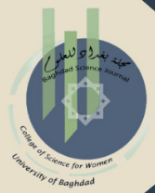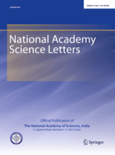
Science Diliman
Scope & Guideline
Elevating Academic Standards, Inspiring Ideas
Introduction
Aims and Scopes
- Biodiversity and Conservation:
The journal features studies on the biodiversity of various species, particularly in the Philippine context, and emphasizes conservation efforts and ecological assessments. - Agricultural and Environmental Sciences:
Research on the impact of environmental factors on agriculture, including studies on heavy metals in urban farming and the effects of probiotics on aquaculture, highlights the journal's focus on sustainable practices. - Microbial and Antimicrobial Research:
The journal publishes works on the isolation and characterization of microbial species and their antimicrobial properties, reflecting a commitment to understanding microbial interactions and applications in health. - Genetic and Phylogenetic Studies:
Papers exploring genetic mapping, phylogeography, and phylogenetic placements demonstrate the journal's interest in genetics and evolutionary biology. - Chemical and Pharmaceutical Sciences:
Research on chemical derivatives and their biological activities showcases the journal's dedication to pharmaceutical sciences and the development of new therapeutic agents.
Trending and Emerging
- Impact of Pollution on Agriculture:
The assessment of heavy metals in urban farming produce and the effects of probiotics on aquaculture highlight a growing concern for pollution's impact on food safety and environmental health. - Conservation Genetics and Phylogenetics:
With papers on phylogeography and genetic mapping of species, there is an emerging trend towards incorporating genetic tools in conservation efforts, emphasizing the importance of genetic diversity in species preservation. - Interdisciplinary Research Approaches:
The integration of various fields, such as combining microbial research with agricultural applications, reflects a trend towards more interdisciplinary studies that address complex scientific problems. - Focus on Antimicrobial Agents:
The increasing research on antimicrobial properties of various compounds indicates a rising interest in combating antibiotic resistance and discovering new therapeutic agents.
Declining or Waning
- Traditional Agricultural Practices:
Earlier publications included more extensive research on traditional agricultural methods. Recent titles indicate a shift towards modern techniques and environmental impacts, suggesting a waning interest in conventional practices. - Physical Geography and Landform Studies:
There has been a noticeable decrease in studies focused on physical geography or landform characteristics of specific regions, which might indicate a pivot towards more biological and ecological research themes. - Chemical Analysis of Non-Antimicrobial Compounds:
The reduction in papers focusing solely on chemical compositions unrelated to antimicrobial properties suggests a declining interest in this area, as the journal appears to prioritize studies with direct health implications.
Similar Journals

Applied Biological Research
Elevating Academic Discourse in Biochemistry and GeneticsApplied Biological Research is a dynamic journal issued by the CENTRE ADVANCEMENT APPLIED SCIENCES, specializing in the interdisciplinary fields of biochemistry, genetics, and molecular biology. With its ISSN 0972-0979 and E-ISSN 0974-4517, this journal serves as a critical platform for the dissemination of peer-reviewed research that addresses pressing challenges and innovations within biological sciences. Although currently it does not adopt an Open Access model, it is dedicated to fostering academic discourse through rigorous publication practices. The journal's impact is underscored by its Scopus rankings, which place it in the 4th and 2nd percentiles in respective categories, emphasizing its emerging influence in the scientific community. Covering research from 2020 to 2024, Applied Biological Research is positioned as an essential read for researchers, professionals, and students seeking to stay at the forefront of biological research and application. Based in the beautiful region of Jammu & Kashmir, India, this journal is committed to advancing applied sciences through innovative research and outreach.

Baghdad Science Journal
Fostering Collaboration in the Heart of ScienceThe Baghdad Science Journal (ISSN: 2078-8665, E-ISSN: 2411-7986), published by the COLL SCIENCE WOMEN, UNIVERSITY OF BAGHDAD, is a pivotal peer-reviewed open-access journal dedicated to a diverse array of scientific disciplines. Since its inception in 2004, it has established itself as a leading platform for disseminating innovative research in areas including Agricultural and Biological Sciences, Biochemistry, Genetics and Molecular Biology, Chemistry, Computer Science, Mathematics, and Physics. The journal has consistently achieved commendable rankings in the Scopus database, reflecting its commitment to quality and relevance in academic research. With a Q2 classification in Agricultural and Biological Sciences and Q3 classifications in several other categories as of 2023, the journal has become an invaluable resource for researchers, professionals, and students eager to contribute to scientific advancement. Based in Iraq, the Baghdad Science Journal serves as a bridge for global scientific communication, encouraging collaboration and providing access to groundbreaking discoveries.

Natural Sciences
Innovative insights for a sustainable future in natural sciences.Natural Sciences is a premier journal published by WILEY, dedicated to advancing the interdisciplinary field of natural sciences through the dissemination of high-quality research. With an ISSN of 2698-6248, this publication features original contributions that explore a wide range of topics including biology, chemistry, physics, and environmental science. Despite the current absence of an impact factor, the journal's commitment to rigorous peer-review ensures the integrity and relevance of its scholarly work. Situated at the forefront of scientific inquiry, Natural Sciences serves as a vital resource for researchers, professionals, and students looking to stay informed about the latest breakthroughs and methodologies in the natural sciences. Emphasizing open access principles, this journal strives to make cutting-edge research readily available to a global audience, fostering collaboration and innovation across disciplines.

JOURNAL OF THE NATIONAL SCIENCE FOUNDATION OF SRI LANKA
Nurturing Excellence in Peer-Reviewed ResearchJOURNAL OF THE NATIONAL SCIENCE FOUNDATION OF SRI LANKA, with ISSN 1391-4588 and E-ISSN 2362-0161, is a respected academic publication disseminated by the National Science Foundation of Sri Lanka. Operating since 1999, this journal encompasses a broad spectrum of multidisciplinary research, currently positioned in the Q3 category and ranking #101 out of 171 in its field, indicating its significant contribution to advancing knowledge across various scientific domains. With an ambition to foster local and international scholarly dialogue, the journal encourages submissions that address fundamental and applied aspects of science pertinent to Sri Lanka and beyond. Though it operates under a conventional access model, the journal is committed to promoting high-quality, peer-reviewed articles that are vital for researchers, professionals, and students aiming to stay at the forefront of scientific advancements in the region.

Beni-Suef University Journal of Basic and Applied Sciences
Fostering collaboration through open-access research.Beni-Suef University Journal of Basic and Applied Sciences, published by SpringerNature, is a premier open-access journal that has been disseminating significant scientific research since 2013. With an E-ISSN of 2314-8543, this journal is situated in Germany and plays a crucial role in fostering scholarly communication across various disciplines, particularly focusing on Agricultural and Biological Sciences, Medicine, and Pharmaceutical Science. As of 2023, it holds notable rankings in Scopus—ranked #41 in Agricultural and Biological Sciences, #135 in Medicine, and #80 in Pharmaceutical Science—emphasizing its reputation and impact in these fields. With a Q2 classification in both Agricultural and Biological Sciences and Pharmaceutical Science, as well as a Q3 designation in Medicine, the journal is positioned as a valuable resource for researchers, professionals, and students seeking to explore the latest advancements and applications in basic and applied sciences. The journal’s commitment to open access ensures that groundbreaking research is accessible to a global audience, thereby fostering innovation and collaboration in the scientific community.

NATIONAL ACADEMY SCIENCE LETTERS-INDIA
Elevating Engineering Insights for Global ChallengesNATIONAL ACADEMY SCIENCE LETTERS-INDIA, published by SPRINGER INDIA, is an esteemed peer-reviewed journal dedicated to advancing knowledge in the field of engineering and its diverse applications. With an ISSN of 0250-541X and an E-ISSN of 2250-1754, this journal serves as a vital platform for researchers and professionals aiming to disseminate their high-quality research findings. Covering a range of topics that intersect engineering disciplines, it holds a respectable Q3 quartile ranking in the Engineering (miscellaneous) category as of 2023, indicating its significant role in the academic community. Located in New Delhi, India, the journal not only provides a valuable forum for innovative ideas from both emerging and established scholars but also emphasizes the importance of scientific research in addressing contemporary global challenges. While currently not offering open access, the NATIONAL ACADEMY SCIENCE LETTERS-INDIA strives to support the development of future technologies and methodologies, inviting contributions that will influence the engineering landscape for years to come.

Biologia Futura
Advancing the Frontiers of Biological ResearchBiologia Futura, an esteemed journal published by SPRINGER HEIDELBERG, serves as a vital platform for researchers and professionals in the fields of Agricultural and Biological Sciences, as well as Biochemistry, Genetics, and Molecular Biology. Established in Hungary, this journal has been at the forefront of scientific inquiry since its inception in 2019 and continues to contribute significantly to advancing knowledge through rigorous peer-reviewed articles. With current rankings placing it in the second quartile for Agricultural and Biological Sciences and third quartile for Biochemistry, Genetics, and Molecular Biology according to Scopus metrics, it reflects a robust academic quality and reach. Scholars are encouraged to share their original research, reviews, and innovations that intersect these dynamic fields. Although not an open access publication, Biologia Futura ensures wide dissemination of high-impact research from its notable address at Tiergartenstraße 17, D-69121 Heidelberg, Germany, aiming to foster collaboration and discovery within the global scientific community.

International Journal of Biology and Chemistry
Advancing Knowledge at the Intersection of Biology and ChemistryInternational Journal of Biology and Chemistry (ISSN: 2218-7979; E-ISSN: 2409-370X) is a distinguished peer-reviewed journal published by AL-FARABI KAZAKH NATIONAL UNIVERSITY, dedicated to advancing the interdisciplinary fields of biology and chemistry. This journal aims to foster a comprehensive understanding of biological systems and chemical processes, thereby promoting collaborative research and innovative methodologies. With a rigorous selection process and commitment to quality, the journal provides a platform for original research articles, reviews, and case studies that contribute to the scientific community's knowledge base. Although specific metrics such as H-Index and Scopus rankings are currently not listed, the journal continues to be an important resource for researchers, professionals, and students alike. By providing open access to high-quality research outputs, the International Journal of Biology and Chemistry is poised to make a significant impact in its field, bridging gaps between biological sciences and chemistry while encouraging groundbreaking discoveries.

Acta Brasiliensis
Illuminating Brazil's Cultural Landscape with Academic RigorActa Brasiliensis is an esteemed academic journal published by the Federal University of Campina Grande. With an ISSN of 2526-432X and an E-ISSN of 2526-4338, this open access journal has been fostering scholarly communication in the field of Brazilian studies since its inception in 2017. Acta Brasiliensis aims to disseminate high-quality research by providing a platform for scholars, professionals, and students to share their work related to various aspects of Brazilian culture, society, and development. The journal's commitment to open access ensures that its content is freely available, promoting wider accessibility and engagement within the academic community. With a growing reputation in the landscape of scientific research, Acta Brasiliensis is poised to make significant contributions to the understanding of Brazilian studies, thereby advancing discourse and collaboration among researchers worldwide.

Science China-Life Sciences
Pioneering discoveries that shape our understanding of life.Science China-Life Sciences, published by SCIENCE PRESS, is a premier academic journal that stands at the forefront of innovative research and discoveries in the fields of life sciences, spanning crucial areas such as agricultural and biological sciences, biochemistry, genetics, molecular biology, and environmental science. With an impressive Q1 ranking in its respective categories—ranked #5 in Agricultural and Biological Sciences, #7 in Environmental Science, and #17 in Biochemistry, Genetics and Molecular Biology—this journal is recognized for its rigorous peer-review process and significant impact within the scientific community, as reflected in its high percentiles (97th and 92nd). Maintained as an Open Access publication, it ensures broad dissemination and accessibility of research findings, fostering collaboration and knowledge sharing among researchers, professionals, and students alike. Given its position in the research landscape and its commitment to high-quality scholarship, Science China-Life Sciences plays a vital role in advancing life sciences research, supporting scientists in addressing global challenges through innovative biological solutions.